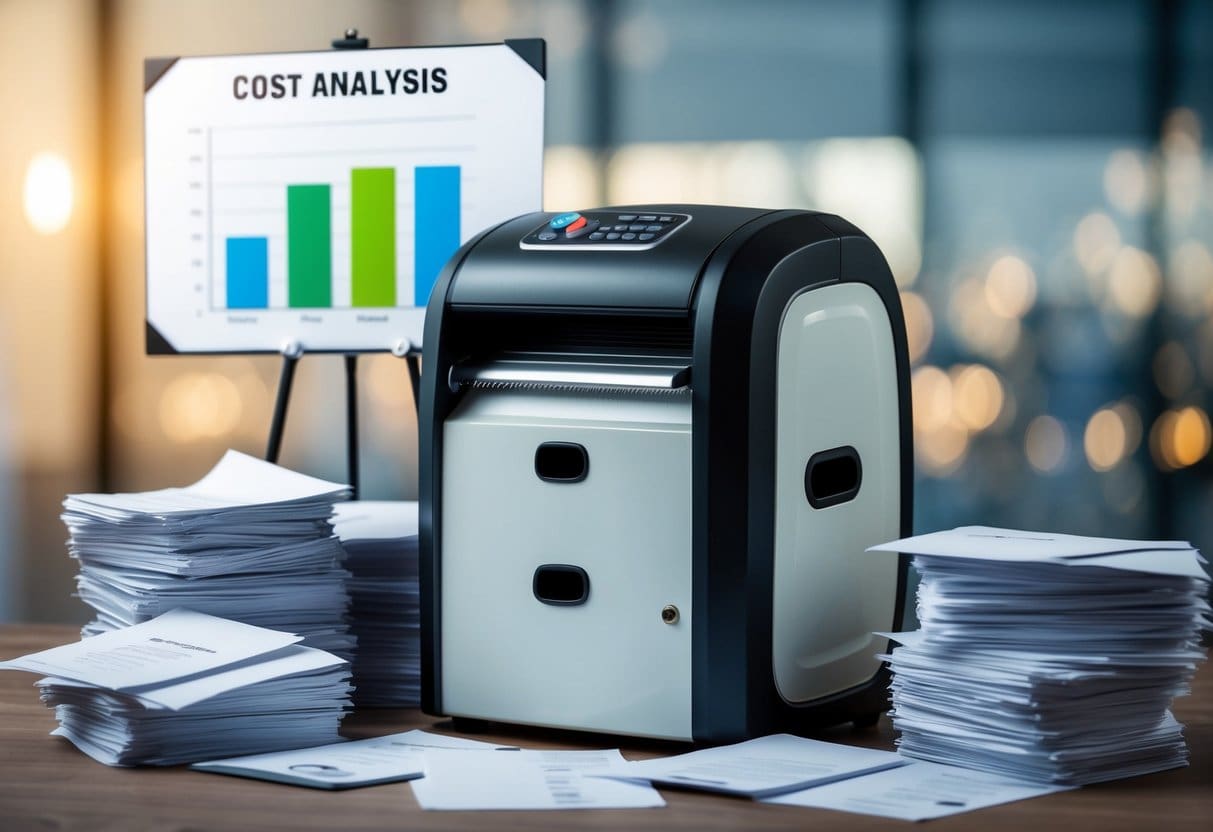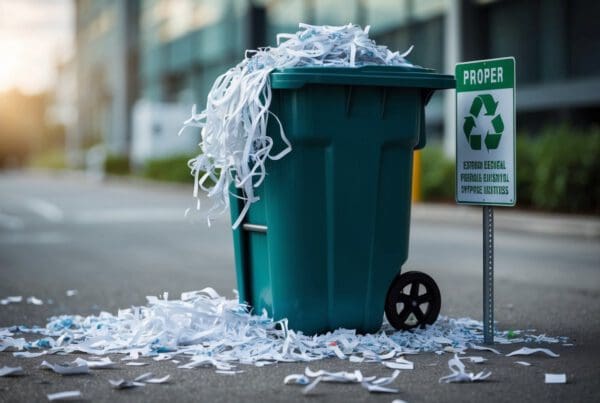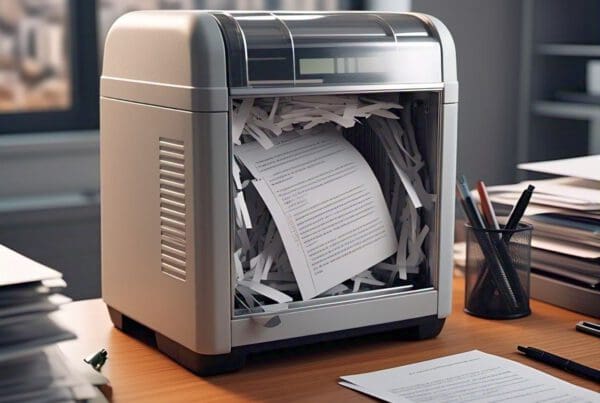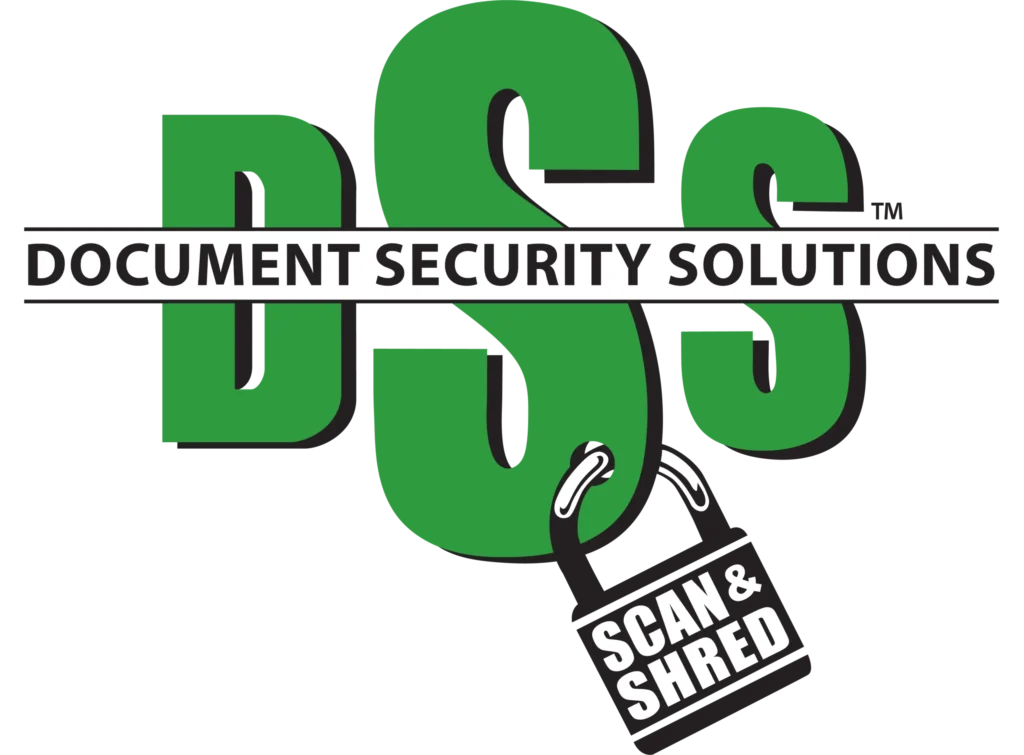Evaluating Document Destruction Costs

In our examination of document destruction costs, we focus on the quantity of documents involved, the method and frequency of shredding, and the type of service provided. Each factor plays a significant role in how much it costs to securely dispose of documents.
Volume of Paper and Shredding Frequency
When considering document destruction costs, the quantity of documents is critical. Larger volumes of paper often increase costs because they require more time and labor to manage. Frequent shredding can also add up in expense. For instance, weekly shredding will typically cost more than a monthly schedule.
Some companies manage costs by adjusting shredding schedules based on their specific needs. This ensures efficient use of resources while maintaining security standards. Understanding our document patterns helps us budget more effectively.
Service Types: On-Site vs. Off-Site Shredding
Choosing between on-site and off-site shredding services affects overall costs. On-site shredding allows us to witness the process firsthand, providing an extra layer of security. This personal assurance might come with a higher price tag due to the convenience and immediacy.
Off-site shredding might be more cost-effective as papers are collected and shredded at a secure location later. This option often suits businesses with less strict security needs. Each service type has unique benefits, depending on our organizational requirements and budget constraints.
Shredding Methods and Labor Costs
The shredding method we choose also influences expenses. Cross-cut shredders, for example, create smaller particle sizes, enhancing security but possibly increasing costs due to higher power needs and slower processing. Strip-cut shredders might be more economical but provide less security.
Labor costs tied to shredding methods are crucial too. Manual shredding involves more employee time, which can add up quickly. Meanwhile, automated shredding systems may reduce labor expenses and improve efficiency, though they might require initial investment. Balancing method choice and labor considerations helps us optimize costs.
Security and Compliance Factors
Document destruction involves more than just getting rid of paper. Our focus is on keeping sensitive information safe. We must meet various privacy laws and ensure that we prevent any data breaches or identity theft.
Privacy Laws and Compliance Requirements
We need to follow strict privacy laws when destroying documents. These laws protect sensitive and confidential information. Different industries have unique regulations. For example, healthcare must comply with HIPAA, while financial institutions follow laws like the Gramm-Leach-Bliley Act.
Our team ensures compliance with these regulations. We regularly update our practices to meet new legal standards. This helps avoid fines and keeps our clients’ trust. Following these regulations also boosts our document security efforts.
Preventing Identity Theft and Data Breaches
Identity theft is a growing concern. Proper document destruction is a key defense against this threat. Careless destruction of documents can lead to data breaches by exposing private information.
We make sure that documents are shredded thoroughly. This prevents unauthorized access to sensitive data. By doing so, we protect personal and business information from potential bad actors. Strong document security practices reduce the risk of identity theft.
Secure Shredding and Certificate of Destruction
Secure shredding is crucial for complete document destruction. We offer advanced shredding solutions to ensure that documents are completely destroyed. This safeguards confidential information from falling into the wrong hands.
A Certificate of Destruction is given after shredding. This certificate serves as proof of compliance with destruction procedures. It reassures our clients that the documents are handled securely and in accordance with regulations.
Tracking and documenting the shredding process builds trust and accountability. This practice enhances overall security and compliance.
Benefits and Considerations for Businesses
Document destruction is vital for protecting sensitive and proprietary information, ensuring security and cost efficiency, and building customer trust. Businesses can gain from adopting secure destruction practices and understanding the implications.
Security Measures for Sensitive and Proprietary Information
We need to stay vigilant about security measures when dealing with sensitive and proprietary business information. Secure document shredding helps protect against data breaches, which can be costly and damaging to a company’s reputation. By regularly destroying these documents, we minimize the risks of confidential information leaking.
Implementing strong policies is crucial. This includes training our employees on the importance of confidentiality and regular audits to ensure compliance. Keeping a consistent schedule for document destruction adds an extra layer of protection. We should also consider investing in high-quality shredders to handle a variety of materials, further ensuring data integrity.
Building Customer Trust through Secure Document Handling
Handling documents securely is not only about protection but also about building a strong relationship with our customers. When clients trust us with their information, they expect it to be handled with the utmost care. Consistent and secure shredding practices help maintain their confidence.
Trust is built by clearly communicating our destruction processes to our customers. Providing them with certificates of destruction can offer peace of mind, showing that we prioritize their privacy. This transparency strengthens our bonds and underscores our commitment to safeguarding their data, which can result in long-term loyalty and positive referrals.
Cost Savings for Small Businesses
For small businesses, cost savings are critical. Implementing a robust document destruction strategy can help us achieve this. By choosing regular shredding over less secure disposal methods, we avoid potential legal issues that might arise from data breaches, which are often expensive to rectify.
Outsourcing our document shredding needs can also be a significant advantage. External providers often offer flexible plans that are both secure and cost-effective. Alternatively, investing in a reliable in-house shredding system could provide us with long-term savings, as it reduces dependency on third-party services. By carefully planning our approach, we can protect our finances while maintaining a high standard of data security.
Professional Shredding Services
Professional shredding services offer secure and efficient ways to destroy sensitive documents. These services help organizations maintain privacy and comply with regulations. We can explore the benefits of these services and how scheduled shredding and clear policies enhance efficiency.
Advantages of Professional Document Shredding
Using professional shredding services ensures that our sensitive data is securely destroyed. These services use industrial shredders that can handle large volumes of paper quickly. This efficiency saves time and resources.
Security is a top priority. Professional services often provide secure containers for collecting documents. These are picked up on a regular schedule, ensuring materials are kept safe until destruction.
Additionally, we receive a Certificate of Destruction after each shredding session. This document proves compliance with legal and industry standards. It is essential for audits and maintaining trust with clients and partners.
Scheduled Shredding and Destruction Policies
Scheduled shredding programs allow us to set a regular pickup schedule. This keeps our office environment tidy and organized by eliminating paper clutter consistently.
Defining document destruction policies is crucial. These policies guide our handling of sensitive information from creation to destruction. Clear guidelines ensure everyone in the organization follows the same procedures.
By combining scheduled shredding with robust policies, we streamline the document destruction process. This combination prevents information leaks and supports legal and regulatory compliance. The result is a proactive approach to managing and disposing of sensitive data.
Environmental Considerations
Environmental considerations are important when it comes to the impact of frequency on document destruction costs. We need to focus on reducing the negative effects of waste and make sure we handle document disposal responsibly.
Environmental Responsibility in Document Disposal
When it comes to document disposal, we need to be environmentally responsible. Proper disposal methods ensure that sensitive information is destroyed while minimizing harm to the environment. Using eco-friendly shredding services or recycling shredded paper can make a big difference.
We should prioritize using methods that reduce carbon footprint. Techniques like energy-efficient shredders or paper recycling can lower environmental impact. Disposal policies should include steps that limit landfill use and encourage sustainable practices.





